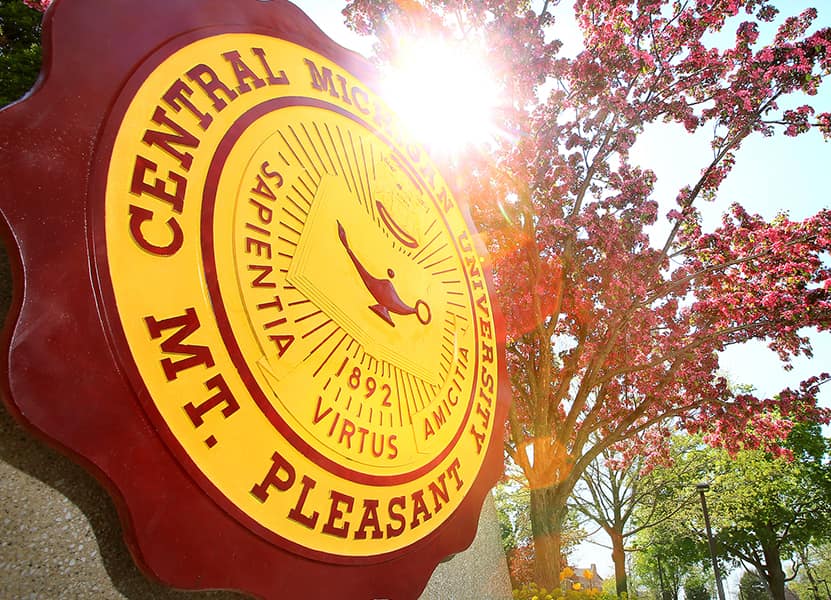Congressman Elford A. Cederberg Papers Collection, 1952-1978, 2006, and undated (majority within 1965-1978)
54 cubic feet in 55 boxes, 1 Oversized folder
Processing Notes: The archivist surveyed the Papers and created processing directions for the students. All boxes with private, personal information that Cederberg’s staff had listed as restricted materials were withdrawn. Academy nominations, resumes and job applications, and cases of prisoners, social security, passport or immigration, military, veterans, and taxes were among these materials. All publications, including bills and acts, except those containing a signed inscription to him, or about Watergate or the Committee on Appropriations were withdrawn. Other materials that were withdrawn from the collection include: all illegible and duplicate materials, general reading or FYI materials, miscellaneous requests for information, blank forms and stationery, materials related to unfunded grants and projects, invitations (except for a sample), thank you notes, and sympathy or congratulation cards.
For preservation purposes, newspaper clippings about Cederberg were photocopied onto acid-free paper and the originals were withdrawn.
The overall strength of the collection is that Cederberg’s work and interests document local Michigan concerns during his career as a Michigan Representative, 1952-1977. His District was mostly agricultural so those concerns are best represented. The Correspondence and Legislation series are of most value to researchers, followed by the Grants and Projects series that document small town and county issues in which he was involved and the thoughts and desires of his constituents.
The Cederberg Papers do not contain any materials relating to Cederberg’s years as Mayor of Bay City or any personal materials relating to his family or friends. Obituaries of Peg and Al Cederberg, 2006, were added at the beginning of Box 1 i 2006.
Audio-Visual Materials Series, 1952-1978 (7 boxes and 1 large folder, approx. 7 cubic feet) This series consists mostly of photographs, various types of video and cassette tapes, mostly of Cederberg giving presentations, or plaques and awards given to Cederberg. Of interest are photographs of Cederberg with mostly Republican politicians and an undated certificate from the Saginaw Chippewa Tribe on birch bark to their good friend Cederberg for his various efforts on their behalf.
Books Series, 1958-1974 (4 boxes, 4 cubic feet) Composed of mostly Committee on Appropriations and Hearings budgetary volumes, there are also two books, one signed by J. Edgar Hoover, 1962, and one by Gerald R. Ford, 1965. The series serves as background information. There are no personal notes written in any of the Budgetary volumes, which are government publications.
Correspondence Series, 1953-1978 (13 boxes, 13 cubic feet) Correspondence includes approximately 2 cubic feet of Alphabetical Correspondence, organized chronologically and alphabetically by surname, 1953-1978, and Subject Correspondence, 1953-1978, arranged chronologically and roughly alphabetically by subject (topic). In this series there is information on taxes, veterans, social security, Vietnam, gun control (before and after President Kennedy’s assassination), Michigan college, and Michigan postmaster positions. Part of this series (box 26) includes information about travels Cederberg made to Vietnam and Michigan, among other places, 1955-1970. In this sub-series there are some photographs and photograph albums which document 1963 and 1968 visits. Also, there is a photograph album of the commissioning of the U.S.S. Saginaw, undated. The Subject part of the Correspondence Series is of greater use to the researcher and covers a plethora of topics of interest to Michiganders from 1953 to 1978.
Election Materials Series, 1968-1976 (1 box, four folders) There are four folders with Elections Materials, 1968-1976. This series includes photographs and paraphernalia from Cederberg’s election campaigns.
Grants Series, 1968-1976 (1 box, .75 cubic foot) Housed with the Elections Materials Series, the Grants Series, 1970-1978, includes state and federal grants awarded to cities, villages, counties, and townships in Cederberg=s congressional district. There are two folders of grants for Michigan Indians, 1975-1978. The Grants series is of interest to patrons researching local Michigan events and concerns. Each folder usually includes a copy of the grant and supporting documentation, if it existed. Most of the grants involve housing, sewer systems, or airports. Similar topics are documented in the Project Series.
Legislation Series, 1953-1978 (22 boxes, 21.5 cubic feet) This series consists of folders, chronologically and alphabetically organized, mostly consisting of correspondence from constituents to Cederberg. Legislative issues such as abortion, labor, taxes, social security, Vietnam, labor, and environmental concerns are well documented over the years. The first two boxes of the series cover agricultural issues. Budget issues that came before the Committee on Appropriations are also well documented.
News Releases Series, 1963-1978, and undated (1 box, .5 cubic feet) Found in Box 49 of the Legislation Series, the News Release Series includes an incomplete run of Cederberg’s newsletters, two radio announcements, some photographs, and four speeches he made. The series offers a superficial view of what Cederberg thought and actions that he took.
Projects Series, 1952-1978 (6 boxes, 6 cubic feet) This series includes project forms, reports, supporting documentation, and correspondence for federal and state projects awarded to cities, townships, and counties in Cederberg’s congressional district, as well as state-wide projects. Local projects usually include water, highway, sewer systems, housing, airports, flood or water control, urban renewal, conservation concerns, such as fish hatcheries, schools, hospitals or medical care facilities, parks, docks, and military training facilities. Of special interest are multiple folders for Saginaw and Wurtsmith Air Force Base projects. General state topics include Michigan cherries, Indians, and highways. There are a number of folders related to different Michigan regional or area development commissions. Similar topics are documented in the Grants Series.
